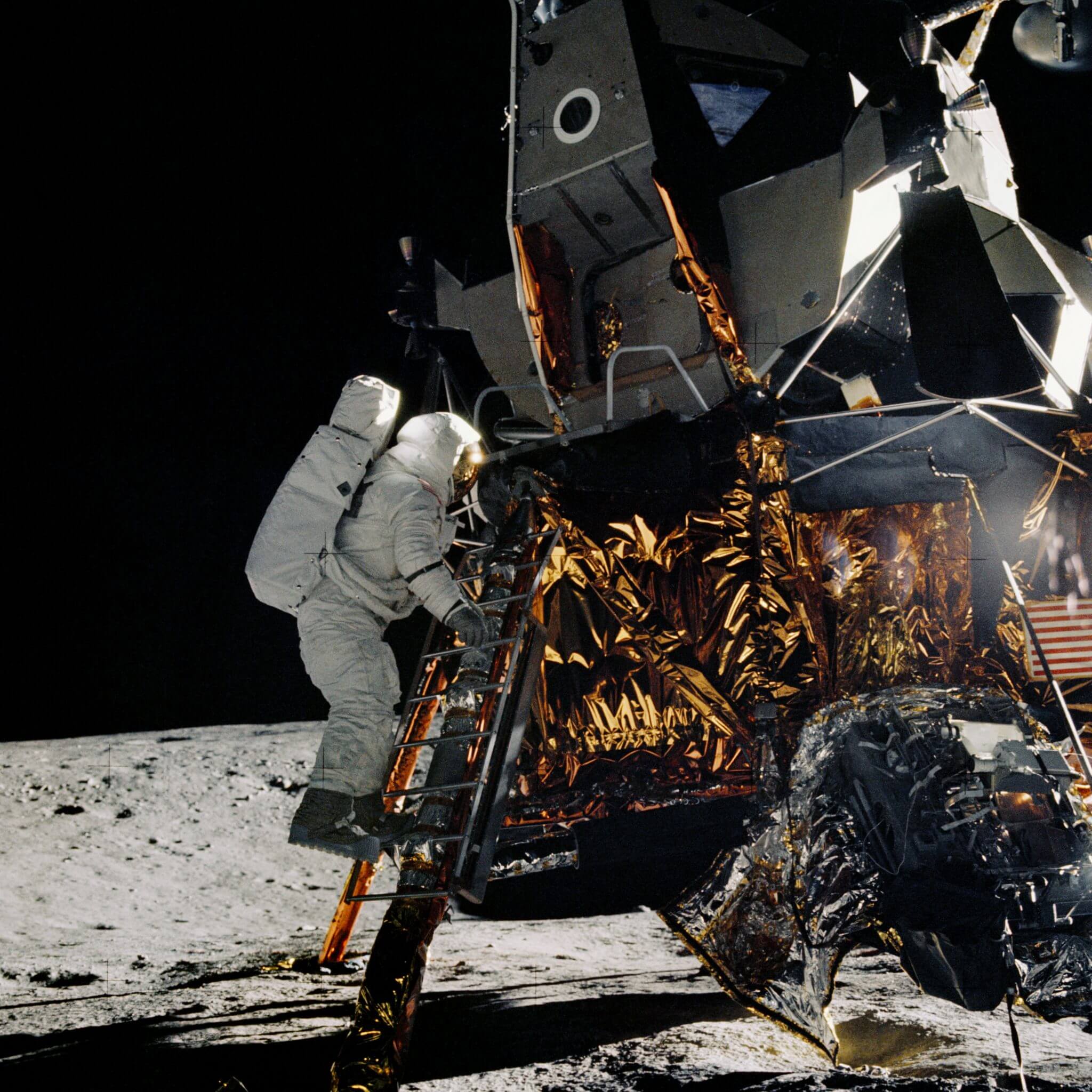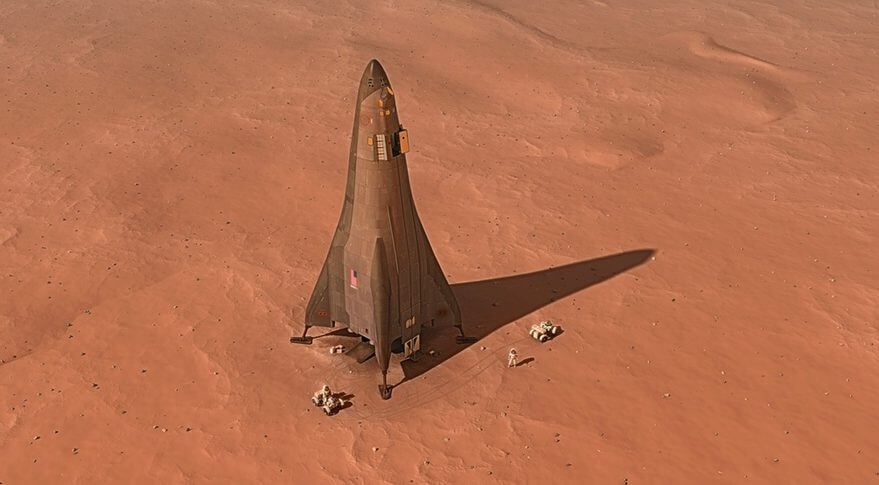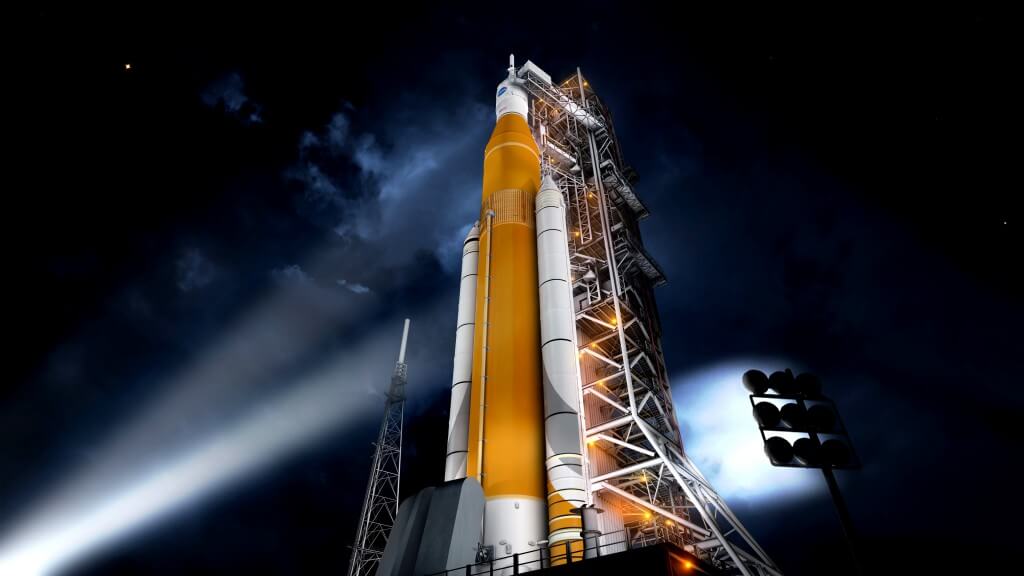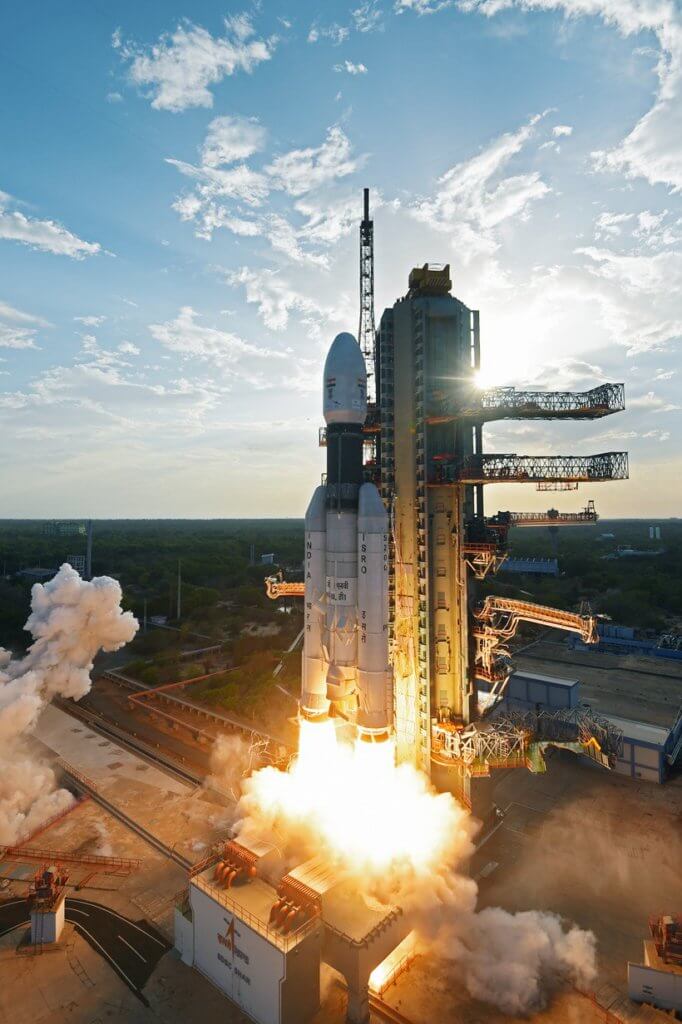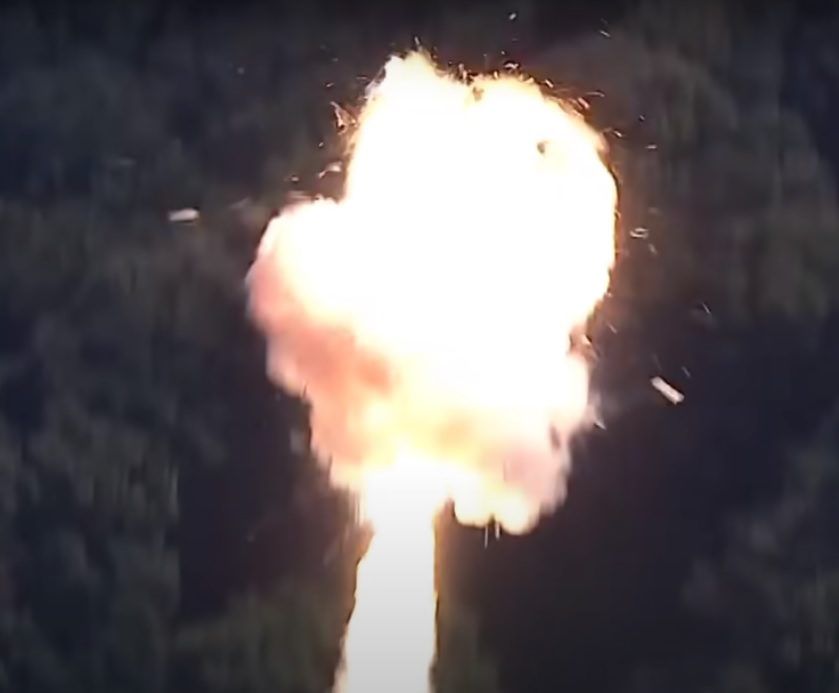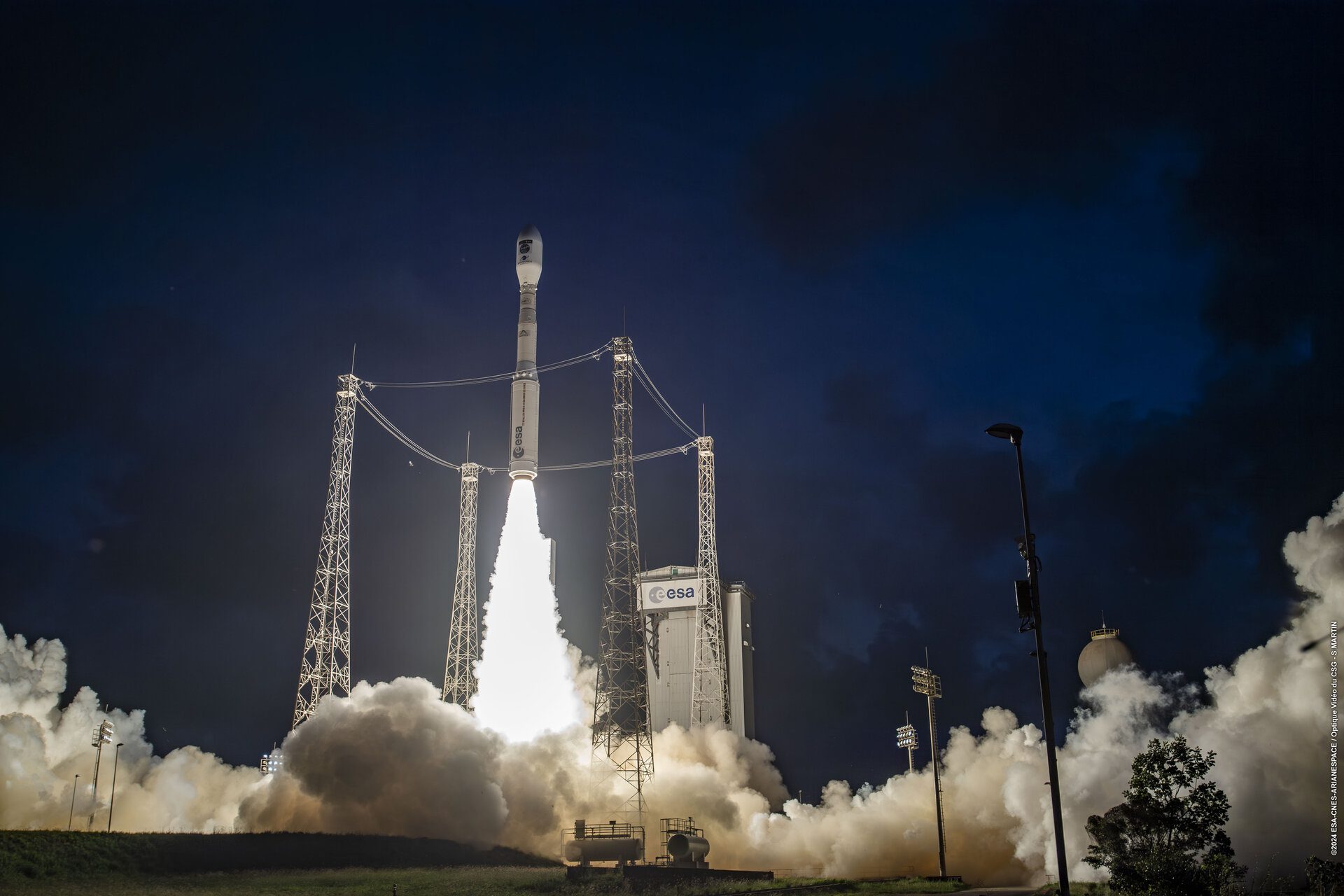While the original space race between superpowers – the USA and Soviet Union during the 1960s – was effectively ended with NASA’s successful Apollo Moon landings (1969-1972), a new “Great Space Race” has begun again, and this time more nations are involved. Every year, Seradata publishes an analysis of the Great Space race, which judges how well each major spacefaring nation is doing. We have limited the analysis to human spaceflight and to two targets: a human return to the Moon and being first to put humans on Mars. On the basis of technological ability, financial and other resources, national will and, most importantly, project progress, we publish our assessment of each nation’s chances in the way that a notional bookmaker would: in the form of odds.
China: Lunar human return – Odds: Evens (1-1) Fav; Mars first human landing – Odds: 5-2
Some might say that China really has got the bit between its teeth – like an overly keen racehorse. While this is certainly true in terms of overall numbers of satellite launches (China is likely to be the overall leader for this year), in the Great Space Race China is not actually racing ahead. It is just going at its own steady pace and does not view the human return to the Moon as a race (it accepts that the race to the Moon was won by the USA in 1969). However, by avoiding the stop-start process and cul-de-sacs experienced by NASA’s programme, it threatens to pass the USA.
NASA has, to some extent, wasted its time developing the Block 1 early version of SLS as an interim Heavy-lift Launch Vehicle (HLV). Meanwhile, China has decided to push forward directly to a more powerful HLV – the Long March 9 rocket. With its 140 metric ton payload to low Earth orbit (LEO) and a 50 metric ton payload to TLI (Trans Lunar Injection), this will be equivalent in capability to the planned final version of the SLS: the yet-to-be-built SLS Block 2. Importantly, unlike the early Block 1 and Block 1B versions of SLS, the Long March 9 will be powerful enough to use a single launch architecture to get China’s taikonauts to the Moon. Given that the SLS Block 2 (or Elon Musk’s powerful BFR) are unlikely to be ready in time, unless the USA reverts to a two-launch strategy with its SLS Block 1, China is likely to beat the Americans back to the lunar surface.
After considering an SLS-like solid booster plus cryogenic core and upper stage, in the end the Chinese space programme plumped for the Saturn V-like concept of having LOx/Kerosene boosters and first stage, with cryogenic second and third stages. According to Long Lehao, chief designer at the Chinese Academy of Launch Technology (CALT), the 93m rocket will have a launch mass of 4,000 metric tons and will make its first flight in 2020. An initial Mars unmanned sample return mission will be the first flight. Human flights to the Moon are surely to follow.
China has perfected lunar landing technology for its Chang’e programme, including the planned Chang’e 4 lunar rover landing on the lunar far side later this year. This technology will be directly applicable to any human-carrying lunar lander design, which China is no doubt developing.
As such, despite Donald Trump’s Presidential decree that the USA should return to the Moon, China retakes the lead in the race for the first human lunar return, which it may be able to accomplish by the mid-2020s. China’s odds have thus come in from last year’s 3-1 to evens (1-1), making it the favourite. Longer term China is eyeing Mars for human exploration, but it will not admit there really is a race for this prize lest it comes second and loses face.
USA: Lunar human return – Odds: 2-1; Mars first human landing – Odds: 1-2 Fav
The quote attributed to Winston Churchill (although others have claims to it), “The Americans will always do the right thing… after they’ve exhausted all the alternatives,” does ring true for the US space programme.
After suffering the cancellation of the Constellation Programme and its Ares I and V launch vehicles, dithering over and then suffering delays in building a replacement HLV, and going down the vague “Flexible Path” involving the bizarre Asteroid Redirect Mission, NASA has finally got its act together and is now actively planning a lunar surface return for its astronauts. But it may be a case of too little, too late.
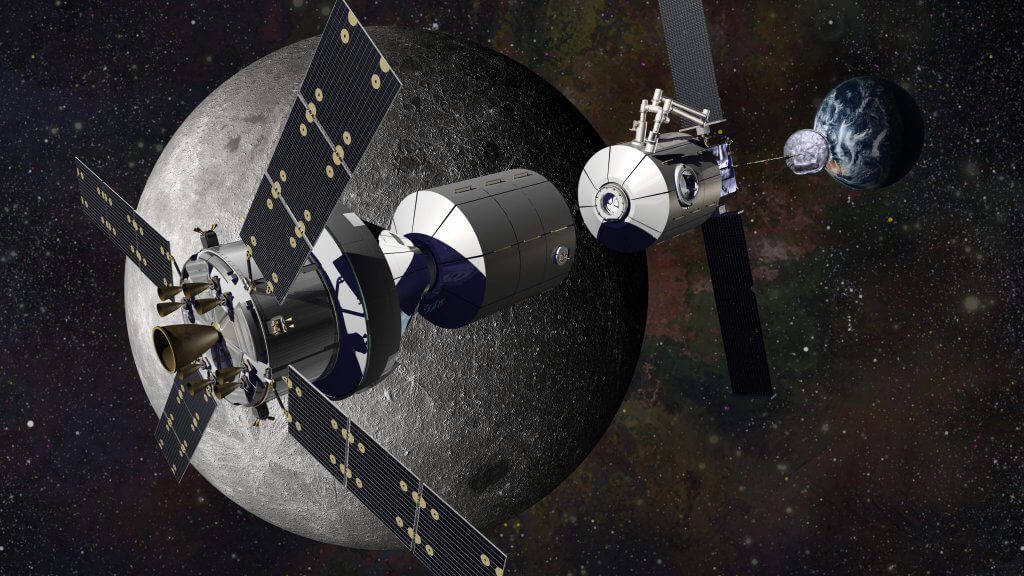
Lockheed Martin design for a cis-lunar “Lunar Gateway” habitat which could become the basis for a long range spacecraft. Courtesy: Lockheed Martin
Under President Trump’s directive to return to the Moon, NASA has now renamed its planned cis-Lunar space station, the Exploration Gateway Platform – sometimes shortened to Lunar Gateway . This was originally designed to test out long-term habitats for a Mars mission, via a near continuous human presence in Cis-lunar space. However, its mission has now been changed to concentrate more on lunar exploration via unmanned and eventually human lunar surface excursions mounted from there using a specialised landing and ascent craft. However, the problem is that while construction of the Lunar Gateway will begin in the early 2020s, NASA will not be ready to make human lunar landings there until the late 2020s, missing the boat if it wants to beat China.
While accepting that it provides a solid foundation for long-term lunar exploration, critics of the Lunar Gateway plan – including some astronauts – are concerned about its long drawn-out timescale, preferring to go faster, and more directly, to the Moon’s surface via simpler Apollo-style lunar surface “sortie” missions. Others (including this writer) wonder whether instead of a space station in lunar orbit, NASA should be concentrating on building a new smaller, simpler space station in LEO – a sort of “Son of Skylab” – to replace the ISS, which is being retired – well actually defunded – in 2025. Such a design could also later be modified for lunar orbital use.
Mind you, while some astronauts want to get back to the Moon earlier than the currently planned the late 2020s, NASA does not actually have a rocket powerful enough to do faster sortie missions via a single launch.
The planned 105 metric ton to LEO class SLS Block 1B, which will be used for the construction of the Lunar Gateway, will not be ready for several years, given that its Exploration Upper Stage (EUS) has yet to be developed. But even this rocket would not be powerful enough for single launch lunar surface sorties.
The later 150 metric ton capable SLS Block 2 version (effectively the SLS Block 1B with advanced liquid or solid rocket boosters), which is needed for the construction of an eventual Mars astronaut landing mission, could do single launch Apollo-class missions to the Moon. However, under current NASA plans, the SLS Block 2 rocket will not be built until the 2030s. Indeed, it may not happen at all as it may soon be usurped by more powerful commercial designs: the SpaceX BFR and the Blue Origin New Armstrong.
Of this commercial pair, both of which are designed to be partially or fully reusable, the BFR’s development is more advanced, with Elon Musk, SpaceX’s founder and chief designer, declaring that he is planning a launch in four years’ time. That timeframe is very optimistic and, in the opinion of this writer, likely to be missed. So neither the SLS Block 2 nor the BFR or New Armstrong are likely to be around in time to allow the USA to beat China back to the Moon.
Nevertheless, the SpaceX BFR mission design, which involves fast refuelling in LEO, does provide the USA with a proper workable system to attempt a human Mars landing in relatively short order – say by the end of the 2020s. President Trump has hinted that NASA might support the SpaceX effort in a kind of public-private partnership. As it is, the original (and competing) NASA “Flexible Path” Mars plan,.using the SLS Block 2 as a construction launch vehicle, remains in place. This plan has been criticized in the past for its “vagueness”, but more recently it has yielded some more solid designs, including Lockheed Martin’s idea for orbiting Mars base camp and a landing vehicle. In other words, the USA has two horses in the Mars race, its official NASA SLS-based one, and the SpaceX BFR plan.
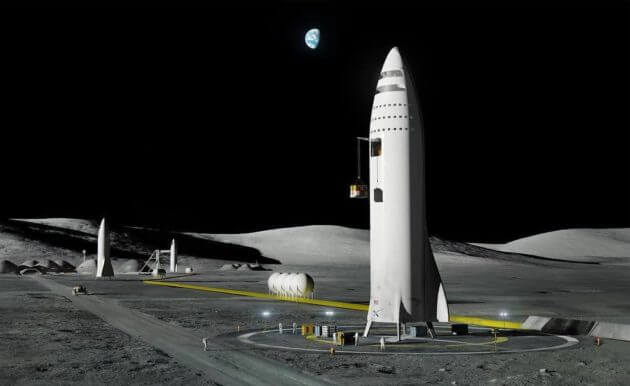
Artist’s impression of Moon base serviced by SpaceX BFR-based transportation vehicle (with inbuilt crane to reach surface). Courtesy: SpaceX
In this writer’s view, Musk’s plan for a long-term colony on Mars may not be realistic and may not have many takers – especially if prospective settlers think hard enough what life would be like on that barren world. The SpaceX BFR effort would not be wasted, however, as it might corner the market in providing Earth-Moon transportation services. With a likely increasing demand for lunar tourism, mining and astronomy operations, Seradata envisages that Earth-Moon transportation could become a very large enterprise indeed. In other words, the Moon is where the money is.
In the nearer term, if the USA wants to beat China to a human return to the Moon, there is another way.
While SLS Block 1B and final SLS Block 2 (the only rocket capable of a single launch sortie mission) are still several years away, NASA does have a human spacecraft/service module in Orion and a basic (now to be human rated) HLV via the SLS Block 1. In fact, both are nearly ready to make rudimentary human around-the-Moon flight as is planned for the EM-2 mission. As such, NASA could move on from such an Apollo 8 type mission to mount an actual landing using a two-launch mission architecture. This would carry the Orion crew transfer and lunar landing elements to lunar orbit using the SLS Block 1 HLV, probably beefed up with extended propellant tanks.
Such a two-launch strategy would be operationally more expensive (two rockets are dearer than one), as well as “riskier” in employing a lunar rendezvous plan (an Apollo 13 type recovery would probably not be possible), but it could be done. Such a strategy has been considered by NASA before – most notably for the Shuttle-based Sidemount HLV design, which eventually lost out to the inline SLS.
Either way, NASA still needs a lunar landing/ascent craft, which will take an estimated four years to build. NASA has recently asked for commercial suggestions for unmanned and human lunar landers.
In conclusion: unless NASA moves to a basic two-SLS Block 1 launch lunar sortie mission employing Orion and a suitable lunar landing/ascent craft, it seems likely to lose the return to the Moon race to China’s Manned space programme. However, thanks to Elon Musk, the USA remains in the driving seat as odd-on favourite for Mars.
Russia: Lunar human return – Odds: 6-1; Mars first human landing – Odds: 10-1
Russia really is the sad case of the space race. Once a major contender for the space race title, the nation now looks like a punch-drunk has-been prize fighter as it struggles with underinvestment, an ageing workforce and its infamous problems with fraud, bribery and corruption. Having led humankind into spaceflight, and previously developed two exotic heavy lift launch vehicles, the N-1 and the first Energia rocket, Russia now finds itself without a heavy lift rocket and without the funding to compete properly.
Nevertheless, earlier in the year, Russia’s President Vladimir Putin recommitted the nation to building a heavy lift launch vehicle. Reports suggest that this is likely to be the Energia 5V, which uses similar propellant choices to the Chinese Long March 9 (LOx/Kerosene main stage and boosters with cryogenic second and third stages). This is expected to be able to launch a payload to LEO of 100-105 metric tons – roughly equivalent to an SLS Block 1B.
This rocket will take about five years to build, however, and will probably also have to use a two-launch plan for a human lunar surface mission. While later versions of the new Federatsiya manned spacecraft can be used for such a mission, Russia will also need a lunar lander. In the Soviet era, the nation did design a very basic small LK lunar lander to land a single Moon-walking cosmonaut – sadly never used in a crewed state – but it would need a new larger design for any future lunar missions.
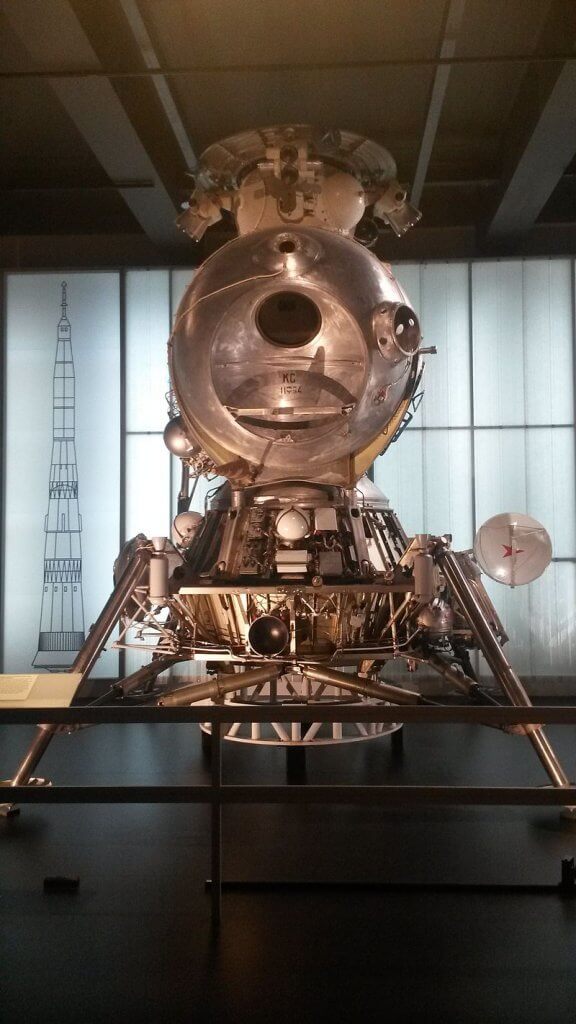
The Russian LK-3 lunar lander (with a drawing of the N-1 rocket behind it) was only designed to carry one cosmonaut. Courtesy: Wikipedia
In any case, are doubts about whether Russia can afford any of this, given its economic circumstances (despite the recent rise in the oil price). At present the Roscosmos is struggling to complete the much-delayed construction of a launch pad at the Vostochny spaceport in the Russian Far East so that its Angara rocket – and its new Federatsiya manned spacecraft replacing the venerable Soyuz – can operate from there for LEO missions. Roscosmos, now a combined space agency/space industrial conglomerate, is likely to have only limited resources to develop any major new rocket or lunar excursion vehicle/lander.
Hence, while Russia remains an admittedly experienced outsider with over six decades of space expertise, it will probably be too under-resourced to be truly competitive with the USA and China. As such, it looks like coming a distant third in any race back to the Moon.
With respect to the red planet, despite various in-orbit and on-land experiments, simulating long distance human missions, Mars remains a distant dream for Russia.
India: Lunar human return – Odds: 33-1; Mars first human landing – Odds: 500-1
While the Indian Space Research Organisation is known to have been flight testing an escape rocket to remove a “gaganaut” (Indian astronaut) carrying capsule in a launch emergency, it was only during August that Indian Prime Minister Narendra Modi has formalised a plan to put Indian citizens into orbit. His expressed hope was that “an Indian son or daughter” would be in orbit on an Indian-flag carrying spaceship called the Gaganyaan in 2022 – the 75th anniversary of the nation’s independence from the British Empire.
Despite a long-term plan to operate a two-stage winged reusable launch system, most expect that it will be the GSLV Mk III rocket that will be human-rated and pressed into service to carry a capsule-like spacecraft. Such a blunt-bodied spacecraft would have the capability to return from the Moon. Nevertheless, India does not yet have the rocket power – a heavy lift launch vehicle twenty times as powerful as a GSLV would be needed – nor does it have a lander required – to mount such a mission. So it remains very much a 33-1 outsider despite its unmanned lunar rover ambitions. Mars is not a serious target for India, despite it famously beating its regional rival China to the planet with an unmanned spacecraft.
One final thing. While India’s space programme can be defended for its helpful services to agriculture, communication and remote education, many wonder whether spending large sums of money on a human space programme can be justified in a land with so many poor, and with more pressing infrastructure needs.
The Other Contenders: 1000-1 for both races
Europe (ESA) and Japan (JAXA) are content to be subordinate, if important, participants in NASA’s exploration plans. Of course, ESA Director General Jan Woerner would prefer to build his lunar village/base ahead of any quick there-and-back mission to Mars. Perhaps both should be done in concert. It has to be realised that while the required delta V velocity increment (and hence required energy) to get to Mars is not much different from flying to the Moon, the travel times (and hence their effect on consumables) differ considerably. Thus, in the medium term, the Moon is more likely to be the place to have a permanent human base/settlement.
Of the other nations, Iran and North Korea officially have human spaceflight programmes but are not seen as serious contenders for now. The UK is not even properly back in the launch business yet, albeit that it does plan to have a space port Nevertheless, the country has its dreamers – especially up at Reaction Engines – who still hope that their planned reusable airbreathing rocket-powered Skylon spaceplane might one day help construct a human mission to Mars.
Apart from Reaction Engines “Project Troy” plan, there are some good British nearer-term ideas on how a human landing on Mars might be achieved.
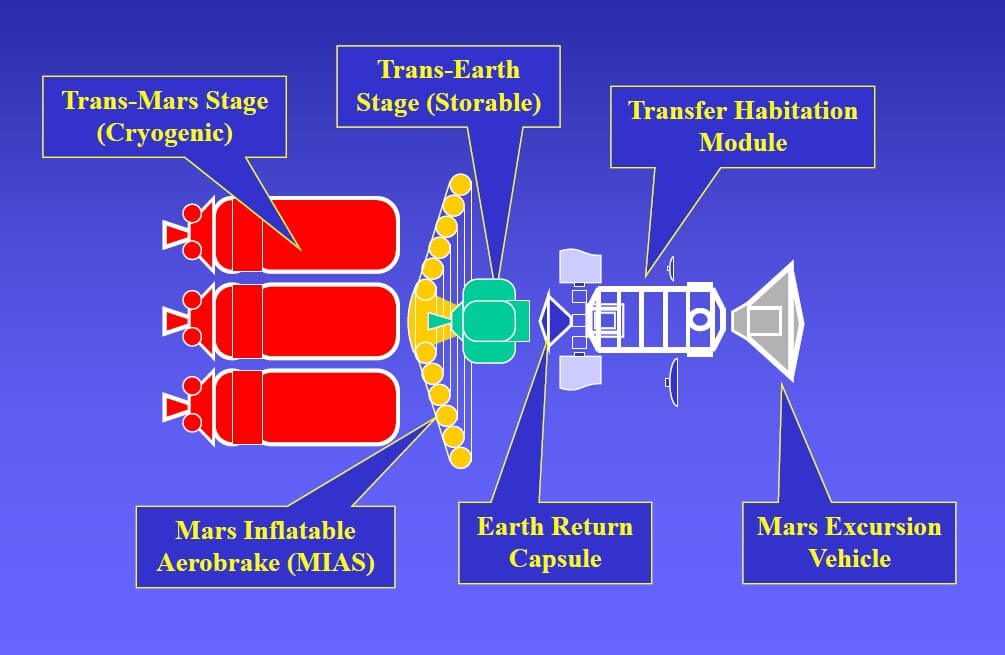
Bob Parkinson’s plan: elements needed for basic human landing mission to Mars. Courtesy: Bob Parkinson
One of these is from DBob Parkinson, who presented a very good and simple human Mars landing mission concept at the Mars in the Age of New Space Launchers Symposium, at the British Interplanetary Society, London, earlier this year. His plan used ingenuity to solve many of the basic problems of such a mission. These included: achieving a major weight saving by employing the same large inflatable heatshield for both aerobraking/aerocapture into Mars orbit and the Mars surface excursion vehicle’s planetary entry; using storable propellants for the Earth return stage to avoid long–term storage/boil off issues of cryogenic systems; and running the whole life support system at “Denver” air pressure to significantly reduce the overall leakage rate. All Bob Parkinson needs now is the use of a friendly HLV and about US$30 billion in cash to make it happen.
Finally, the Isle of Man left the field as a “non-runner” a few years ago after the demise of the Excalibur exploration enterprise, but the spaceflight minnow will forever be remembered in this survey for being briefly seriously considered a challenger to the “big boys” in the race to the Moon and Mars.

